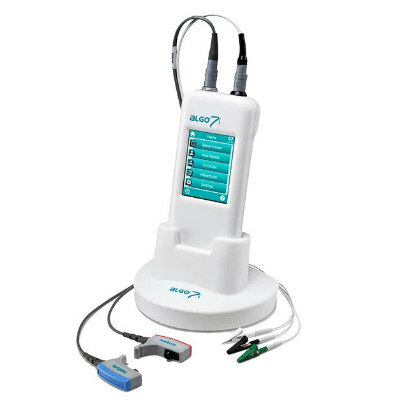Top Trends Impacting Global Wearable Devices Market
|
By HospiMedica International staff writers Posted on 08 Sep 2017 |
The global market for wearable medical devices is projected to grow at a CAGR of more than 9% from 2017-2021, driven mainly by the increasing prevalence of chronic diseases, growing need for cost-effective diagnosis and treatment, and increasing number of compatible smartphone applications. These are the latest findings of Technavio Research, (London, UK), a global technology research and advisory company.
Increasing prevalence of chronic diseases: People suffering from chronic diseases such as diabetes and asthma require constant monitoring and are therefore, adopting wearable medical devices, which help to reduce costs and the burden of hospital visits. CVDs are estimated to cause approximately 19 million deaths by 2020, while asthma accounts for six to seven in every 1,000 deaths annually. The number of people aged 65 years and above is expected to rise to about 1.6 billion by 2050. The rising prevalence of CVDs such as stroke and chronic respiratory diseases like asthma, coupled with the increase in aging population is expected to lead to higher demand for wearable medical devices.
Growing need for cost-effective diagnosis and treatment: The treatment of chronic diseases such as diabetes, asthma, and cancer is significantly less expensive and easier to manage when detected at an early stage. Smart wearables allow early detection of such diseases, thereby helping in their effective management. Self-monitoring of medical conditions using connected wearable medical devices helps reduce costs and promote healthier lifestyles. For instance, wearable ECG portable machines are more cost effective for people in need of regular ECG monitoring. Similarly, people suffering from CVDs can use wearable medical devices to detect AF instead of undergoing multiple ECG tests at hospitals.
Increasing number of compatible smartphone applications: The increasing adoption of smartphones is also driving the growth of the global wearable medical devices market. With the advent of smart wearables, there has been a significant increase in the scope for remote monitoring. Wearable patient monitoring devices record various vital signs such as heart rate, respiratory rate, skin temperature, and glucose levels, thus generating significant volume of data in the process that can be analyzed using smartphones. For instance, companies such as Fitbit and Garmin have launched wearable medical devices which are compatible with smartphones for monitoring heart rhythms, sleep, and calories.
“Wearable devices that are connected with cloud-based monitoring technologies enable digital remote monitoring and reduce hospital expenditure and costs. These products are gaining popularity among consumers and are expected to witness increased adoption due to reducing prices,” said Ramakrishna Edupulapati, a lead analyst at Technavio for orthopedics and medical devices research. “The global smart devices market is growing rapidly, as vendors are making significant investments in R&D to develop new products. With innovative technologies, cloud computing, and machine learning, the use of smartphones with specific applications will drive the demand for wearable medical devices.”
Related Links:
Technavio Research
Increasing prevalence of chronic diseases: People suffering from chronic diseases such as diabetes and asthma require constant monitoring and are therefore, adopting wearable medical devices, which help to reduce costs and the burden of hospital visits. CVDs are estimated to cause approximately 19 million deaths by 2020, while asthma accounts for six to seven in every 1,000 deaths annually. The number of people aged 65 years and above is expected to rise to about 1.6 billion by 2050. The rising prevalence of CVDs such as stroke and chronic respiratory diseases like asthma, coupled with the increase in aging population is expected to lead to higher demand for wearable medical devices.
Growing need for cost-effective diagnosis and treatment: The treatment of chronic diseases such as diabetes, asthma, and cancer is significantly less expensive and easier to manage when detected at an early stage. Smart wearables allow early detection of such diseases, thereby helping in their effective management. Self-monitoring of medical conditions using connected wearable medical devices helps reduce costs and promote healthier lifestyles. For instance, wearable ECG portable machines are more cost effective for people in need of regular ECG monitoring. Similarly, people suffering from CVDs can use wearable medical devices to detect AF instead of undergoing multiple ECG tests at hospitals.
Increasing number of compatible smartphone applications: The increasing adoption of smartphones is also driving the growth of the global wearable medical devices market. With the advent of smart wearables, there has been a significant increase in the scope for remote monitoring. Wearable patient monitoring devices record various vital signs such as heart rate, respiratory rate, skin temperature, and glucose levels, thus generating significant volume of data in the process that can be analyzed using smartphones. For instance, companies such as Fitbit and Garmin have launched wearable medical devices which are compatible with smartphones for monitoring heart rhythms, sleep, and calories.
“Wearable devices that are connected with cloud-based monitoring technologies enable digital remote monitoring and reduce hospital expenditure and costs. These products are gaining popularity among consumers and are expected to witness increased adoption due to reducing prices,” said Ramakrishna Edupulapati, a lead analyst at Technavio for orthopedics and medical devices research. “The global smart devices market is growing rapidly, as vendors are making significant investments in R&D to develop new products. With innovative technologies, cloud computing, and machine learning, the use of smartphones with specific applications will drive the demand for wearable medical devices.”
Related Links:
Technavio Research
Latest Business News
- Johnson & Johnson Acquires Cardiovascular Medical Device Company Shockwave Medical
- Mindray to Acquire Chinese Medical Device Company APT Medical
- Olympus Acquires Korean GI Stent Maker Taewoong Medical
- Karl Storz Acquires British AI Specialist Innersight Labs
- Stryker to Acquire French Joint Replacement Company SERF SAS
- Medical Illumination Acquires Surgical Lighting Specialist Isolux
- 5G Remote-Controlled Robots to Enable Even Cross-Border Surgeries

- International Hospital Federation Announces 2023 IHF Award Winners
- Unprecedented AI Integration Transforming Surgery Landscape, Say Experts

- New WHO Guidelines to Revolutionize AI in Healthcare
- Getinge Acquires US-Based Medical Equipment Provider Healthmark Industries
- Global Surgical Lights Market Driven by Increasing Number of Procedures
- Global Capsule Endoscopy Market Driven by Demand for Accurate Diagnosis of Gastrointestinal Conditions
- Global OR Integration Market Driven by Need for Improved Workflow Efficiency and Productivity
- Global Endoscopy Devices Market Driven by Increasing Adoption of Endoscopes in Surgical Procedures
- Global Minimally Invasive Medical Devices Market Driven by Benefits of MIS Procedures
Channels
Artificial Intelligence
view channel
AI-Powered Algorithm to Revolutionize Detection of Atrial Fibrillation
Atrial fibrillation (AFib), a condition characterized by an irregular and often rapid heart rate, is linked to increased risks of stroke and heart failure. This is because the irregular heartbeat in AFib... Read more
AI Diagnostic Tool Accurately Detects Valvular Disorders Often Missed by Doctors
Doctors generally use stethoscopes to listen for the characteristic lub-dub sounds made by heart valves opening and closing. They also listen for less prominent sounds that indicate problems with these valves.... Read moreCritical Care
view channel
Deep-Learning Model Predicts Arrhythmia 30 Minutes before Onset
Atrial fibrillation, the most common type of cardiac arrhythmia worldwide, affected approximately 59 million people in 2019. Characterized by an irregular and often rapid heart rate, atrial fibrillation... Read more
Breakthrough Technology Combines Detection and Treatment of Nerve-Related Disorders in Single Procedure
The peripheral nervous system (PNS) serves as the communication network that links the brain and spinal cord to every other part of the body. It consists of two parts: the somatic nervous system, which... Read moreSurgical Techniques
view channel
Hydrogel-Based Miniaturized Electric Generators to Power Biomedical Devices
The development of engineered devices that can harvest and convert the mechanical motion of the human body into electricity is essential for powering bioelectronic devices. This mechanoelectrical energy... Read moreWearable Technology Monitors and Analyzes Surgeons' Posture during Long Surgical Procedures
The physical strain associated with the static postures maintained by neurosurgeons during long operations can lead to fatigue and musculoskeletal problems. An objective assessment of surgical ergonomics... Read more.jpg)
Custom 3D-Printed Orthopedic Implants Transform Joint Replacement Surgery
The evolving field of 3D printing is revolutionizing orthopedics, especially for individuals requiring joint replacement surgeries where traditional implants fail to provide a solution. Although most people... Read more
Cutting-Edge Imaging Platform Detects Residual Breast Cancer Missed During Lumpectomy Surgery
Breast cancer is becoming increasingly common, with statistics indicating that 1 in 8 women will develop the disease in their lifetime. Lumpectomy remains the predominant surgical intervention for treating... Read morePatient Care
view channel
Surgical Capacity Optimization Solution Helps Hospitals Boost OR Utilization
An innovative solution has the capability to transform surgical capacity utilization by targeting the root cause of surgical block time inefficiencies. Fujitsu Limited’s (Tokyo, Japan) Surgical Capacity... Read more
Game-Changing Innovation in Surgical Instrument Sterilization Significantly Improves OR Throughput
A groundbreaking innovation enables hospitals to significantly improve instrument processing time and throughput in operating rooms (ORs) and sterile processing departments. Turbett Surgical, Inc.... Read more
Next Gen ICU Bed to Help Address Complex Critical Care Needs
As the critical care environment becomes increasingly demanding and complex due to evolving hospital needs, there is a pressing requirement for innovations that can facilitate patient recovery.... Read moreGroundbreaking AI-Powered UV-C Disinfection Technology Redefines Infection Control Landscape
Healthcare-associated infection (HCAI) is a widespread complication in healthcare management, posing a significant health risk due to its potential to increase patient morbidity and mortality, prolong... Read moreHealth IT
view channel
Machine Learning Model Improves Mortality Risk Prediction for Cardiac Surgery Patients
Machine learning algorithms have been deployed to create predictive models in various medical fields, with some demonstrating improved outcomes compared to their standard-of-care counterparts.... Read more
Strategic Collaboration to Develop and Integrate Generative AI into Healthcare
Top industry experts have underscored the immediate requirement for healthcare systems and hospitals to respond to severe cost and margin pressures. Close to half of U.S. hospitals ended 2022 in the red... Read more
AI-Enabled Operating Rooms Solution Helps Hospitals Maximize Utilization and Unlock Capacity
For healthcare organizations, optimizing operating room (OR) utilization during prime time hours is a complex challenge. Surgeons and clinics face difficulties in finding available slots for booking cases,... Read more
AI Predicts Pancreatic Cancer Three Years before Diagnosis from Patients’ Medical Records
Screening for common cancers like breast, cervix, and prostate cancer relies on relatively simple and highly effective techniques, such as mammograms, Pap smears, and blood tests. These methods have revolutionized... Read morePoint of Care
view channel
Critical Bleeding Management System to Help Hospitals Further Standardize Viscoelastic Testing
Surgical procedures are often accompanied by significant blood loss and the subsequent high likelihood of the need for allogeneic blood transfusions. These transfusions, while critical, are linked to various... Read more
Point of Care HIV Test Enables Early Infection Diagnosis for Infants
Early diagnosis and initiation of treatment are crucial for the survival of infants infected with HIV (human immunodeficiency virus). Without treatment, approximately 50% of infants who acquire HIV during... Read more
Whole Blood Rapid Test Aids Assessment of Concussion at Patient's Bedside
In the United States annually, approximately five million individuals seek emergency department care for traumatic brain injuries (TBIs), yet over half of those suspecting a concussion may never get it checked.... Read more















